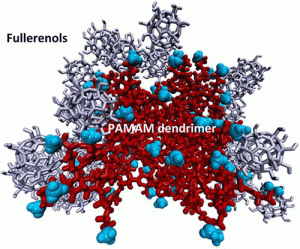They’re usually called apostates; those people who switch from one belief to its opposite. In this case, an advocate who opposed genetically modified foods switched sides as a January 17, 2019 news item on ScienceDaily explains,
What happens when a strong advocate for one side of a controversial issue in science publicly announces that he or she now believes the opposite? Does the message affect the views of those who witness it — and if so, how?
Although past research suggests that such “conversion messages” may be an effective persuasion technique, the actual effect of such messages has been unknown.
A January 17, 2019 Annenberg Public Policy Center (University of Pennsylvania, US) news release (also on EurekAlert), which originated the news item, notes that the ‘conversion’ can have an effect in certain circumstances,
Now, a new study from researchers at the Annenberg Public Policy Center shows that such a conversion message can influence public attitudes toward genetically modified (GM) foods.
Using video of a talk by the British environmentalist Mark Lynas about his transformation from an opponent of GM crops to an advocate, researchers found that Lynas’ conversion narrative had a greater impact on the attitudes of people who viewed it than a direct advocacy message.
“People exposed to the conversion message rather than a simple pro-GM message had a more favorable attitude toward GM foods,” said Benjamin A. Lyons, a former postdoctoral fellow at the Annenberg Public Policy Center (APPC) of the University of Pennsylvania. “The two-sided nature of the conversion message – presenting old beliefs and then refuting them – was more effective than a straightforward argument in favor of GM crops.”
“Conversion messages and attitude change: Strong arguments, not costly signals” was published in January 2019 in the journal Public Understanding of Science. The study was done by Lyons, now a research fellow at the University of Exeter, U.K., with two other former APPC postdoctoral fellows – Ariel Hasell, a research fellow at the University of Michigan, and Meghnaa Tallapragada, an assistant professor of strategic communication at Clemson University – and APPC Director Kathleen Hall Jamieson.
How the study worked In 2013, Lynas, a journalist and activist who had opposed GM crops, spoke at the Oxford Farming Conference about his change of belief. In the current experiment, APPC researchers used video excerpts from Lynas’ talk to more than 650 U.S. adult participants, who competed a survey about it.
The respondents each were shown one of three video clips: 1) Lynas explaining the benefits of GM crops; 2) Lynas discussing his prior beliefs and changing his mind about GM crops; and 3) Lynas explaining why his beliefs changed, including the realization that the anti-GM movement he helped to lead was a form of anti-science environmentalism.
The researchers found that both forms of the conversion message (2 and 3) were more influential than the simple advocacy message. There was no difference in impact between the basic conversion message and the more elaborate one.
Measuring how the conversion narrative worked, the researchers found that it enhanced Lynas’ “perceived argument strength,” rather than bolstering his personal credibility, which they found an important distinction. The fact that argument strength served as a mediator on GM attitudes supports the idea that “the unexpected shift in the position of the speaker … prompted central or systematic processing of the argument,” which, in turn, implies a more durable change in attitudes.
GM foods: A low-profile issue on which minds may be changed? Unlike other controversial issues in science such as evolution or climate change, Americans’ views on GM crops do not seem to be related to political ideology or religious beliefs. Nor are Americans especially knowledgeable about GM foods – one prior study found that only 43 percent of Americans know that GM foods are available for human consumption and only 26 percent believe that they have eaten food that was genetically modified. In another earlier study, 71 percent of Americans say they have heard little or nothing about GM foods – yet 39 percent think GM foods present a risk to human health.
Given that many Americans’ views on genetically modified foods aren’t yet fixed by group values and motivated reasoning [emphasis mine], their minds may be more easily changeable on this issue. Lyons said it may be possible to present scientific evidence through a conversion narrative to people on such low-knowledge, lower-profile issues and affect their views.
“After completing this study, I’m more optimistic about our ability to change minds on the issues that haven’t been totally polluted by ideology,” Lyons said.
The researchers cautioned that the findings may not extend beyond an American audience, and said that their audience included many who did not have strong pro- or anti-GM attitudes. They said conversion messaging should be tested with people who do have strong pre-existing views on GM foods. They also noted that this research tested a conversion in only one direction – from anti-GM to pro-GM foods – and said it would be valuable to explore the opposite case.
Here’s a link to and a citation for the paper,
Conversion messages and attitude change: Strong arguments, not costly signals by Benjamin A. Lyons, Ariel Hasell, Meghnaa Tallapragada, Kathleen Hall Jamieson. Public Understanding of Science. DOI: https://doi.org/10.1177/0963662518821017 First Published January 10, 2019
This paper is behind a paywall


